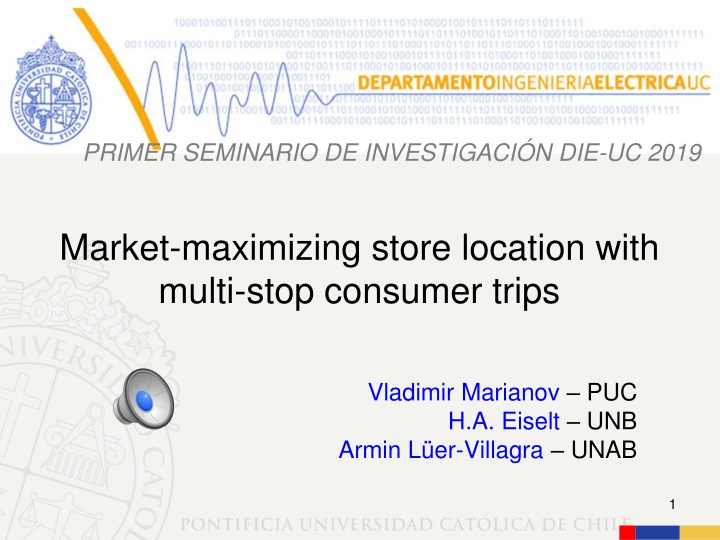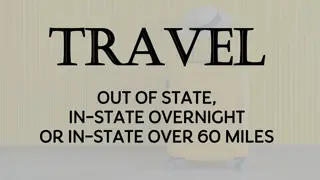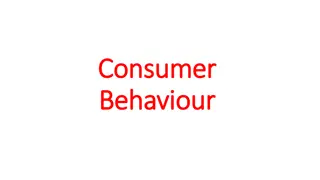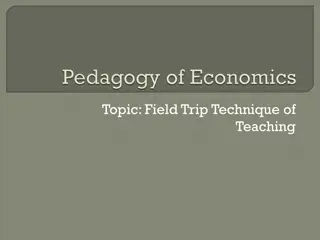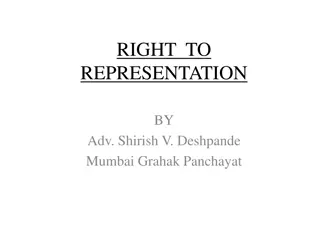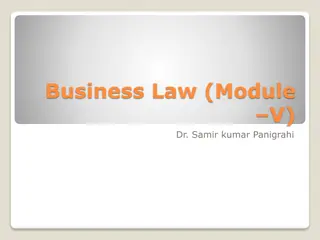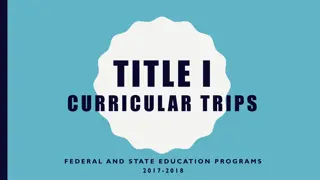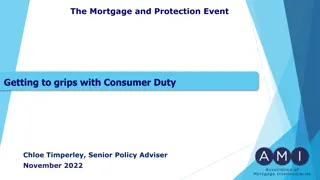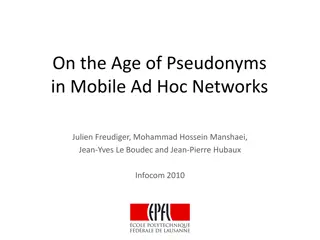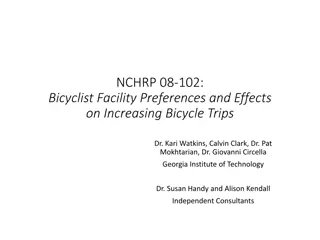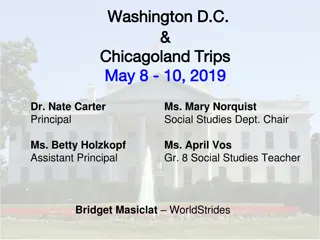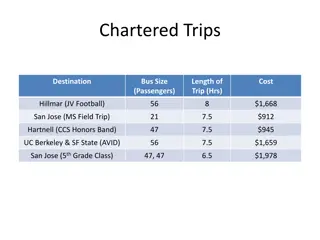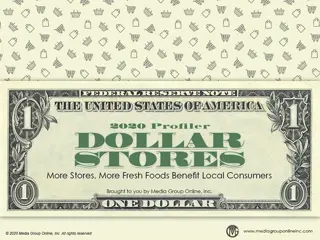Market-Maximizing Store Location Strategies for Multi-Stop Consumer Trips
Addressing key location problems for commercial stores, this research explores strategies to optimize store placement to attract consumers on multi-stop trips. Factors such as timing, size, and allocation are considered, with a focus on the interaction between infrastructure and human behavior. By analyzing games and player dynamics, the study sheds light on how firms can strategically position stores to maximize market share and consumer utility in a competitive landscape.
Download Presentation

Please find below an Image/Link to download the presentation.
The content on the website is provided AS IS for your information and personal use only. It may not be sold, licensed, or shared on other websites without obtaining consent from the author.If you encounter any issues during the download, it is possible that the publisher has removed the file from their server.
You are allowed to download the files provided on this website for personal or commercial use, subject to the condition that they are used lawfully. All files are the property of their respective owners.
The content on the website is provided AS IS for your information and personal use only. It may not be sold, licensed, or shared on other websites without obtaining consent from the author.
E N D
Presentation Transcript
PRIMER SEMINARIO DE INVESTIGACIN DIE-UC 2019 Market-maximizing store location with multi-stop consumer trips Vladimir Marianov PUC H.A. Eiselt UNB Armin L er-Villagra UNAB 1
PRIMER SEMINARIO DE INVESTIGACIN DIE-UC 2019 Location problems with games (why BK and KFC agglomerate) 2
Overview Introduction Multipurpose shopping Comparison shopping Extensions 4
Introduction We address location problems: Where, when, how many, how large, allocate In particular, commercial stores Interaction of infrastructure and human behavior: several actors (firms, customers) Non competitive and competitive 5
A simple case. Discrete space. Single purpose trips Ni= {j | dij< S} vi= yj= 1 if customers at i travel 1 if a store is located at j S Max hv i i i . . s a v y i i j S j N i y p j j 6
Multipurpose trips. Games and Players Firm 1, locates stores first Firm 2, locates stores later Consumers, choose what, where to buy, maximize utility von Stackelberg games, sequential moves Different cases 7
Game 1: Multipurpose shopping Firm 1 sells pants, firm 2 sells shirts, both maximize their market. No hard competition Consumers, choose what, where to buy: firms need to consider them But no location literature on multipurpose shopping trips Economy, transport and marketing nerds have studied this 2/3 of trips are multipurpose 8
Consumer utilities Single Stop Trip (SST) ( ) = + A ij A A j u r g g i ij ji Two Stop Trip (TST) ( ) = + + + AB ijk A A k B B j u r r g g g i i ik kj ji Store A Store B Consumer i 9
Then Firms must locate considering consumer behavior Consumers choose highest utility trip: single, multipurpose Game. Bilevel. B is follower Max (Capture by Bin SST s + TST s) s.t. B locates nB stores Max (customers utility in SST s or TST s) s.t. Each customer chooses one type of trip, or not purchasing at all 10
Game 2: Comparison shopping Firm 1 and 2 sell different brands of shirts, both maximize their market. They compete: leader, follower Consumers, choose what, where to buy Consumers Taste uncertainty. Incomplete information on features, prices known. Consumers at i have a reservation price ri Can visit one or two stores, purchase at most one unit. Depends on consumer s utility Ceteris paribus, a 50% is purchased at each firm 12
Consumer utilities ( ) 1= ri 1-pj 1- gij+ gji uij Single Stop Trip (SST) { ( )+ )}+ui2 2 Stop Trip (TST) 21= ri- gik+ gkj+ pikj ( 21gji+pj )gjk+ gki+pk 1 uikj ( 1- pikj 21 2 There is an additional benefit ui2 for comparing Several possible consumer search strategies Store A Store B Consumer i 13
von Stackelberg problem Max (Capture by 2 in SST s + TST s) s.t. 2 locates n2 stores Max (customers utility in SST s or TST s) s.t. Each customer chooses one type of trip, or not purchasing at all 14
We formulate it as one level Max (Capture by 1 in SST s + TST21 s + TST12 s) s.t. - 1 locates n1 stores - highest utility constraints (one for each possible mode: SST 1; SST 2; SST tie; TST21; TST12) - At most one purchase is made, one mode 15
Numbers and locations, r = 50 Leader locates MCLP; ui2 = 0, 100, 200, 300 16
Extensions Different customer behaviors Discrete choice models Leader problem Several stores Webrooming, Showrooming, general effects of internet on locations 17
